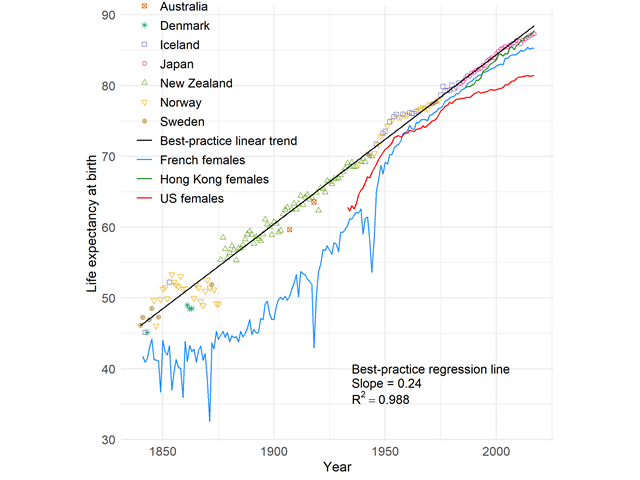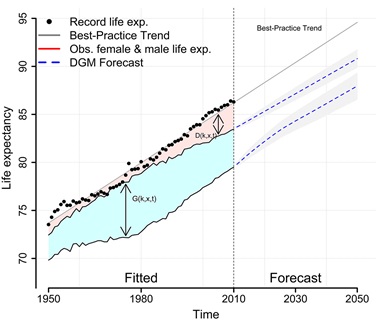The aim of the Methods Research Section is to develop novel demographic models and statistical methods to explore the causes and consequences of the age-specific trajectories of survival and fecundity in humans and across the tree of life. We are a group of interdisciplinary researchers spanning mathematics, statistics, formal demography and biology most of whom have strong mathematical and statistical interests and skills. Our work can be divided into three main research areas:
- Statistical inference, where we are developing Bayesian inference models for age-specific survival and fecundity when age information is missing, and models to estimate smooth distributions of ages at death from grouped demographic data (e.g. life tables);
- Mortality forecasting, where we are exploring novel methods to predict future life expectancy and their societal implications in terms of current policies and future reforms, as well as developing integrated population models to understand the population dynamics of species of conservation and commercial value;
- Mathematical demography, where we are deriving the mathematical framework that explains the surprising linear relationship between life expectancy and lifespan equality found in humans and other species, as well as developing discrete approximations to continuous demographic functions (e.g. life table entropy).
Our methods and their applications have been featured in wide range of scientific journals, from high impact journals such as PNAS, to specialized journals such as Aging Cell or Methods in Ecology and Evolution.

